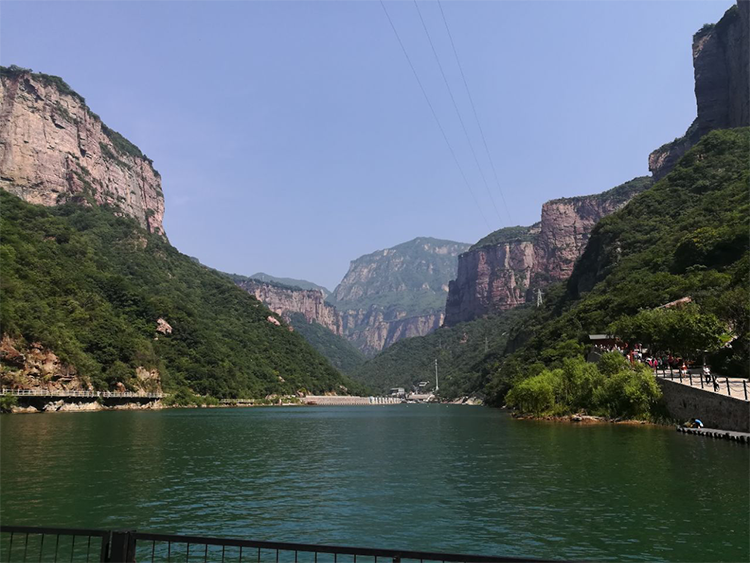Baoquan Gorge, Xinxiang: Explore Taihang’s Waterfall Wonderland and Red Tourism Sites
Introduction:
When the 300-meter Feilong (Flying Dragon) Waterfall pours like a silver river and mists rise against the rust-red cliff faces, you understand why this Taihang foothill canyon is nicknamed the ‘Little Jiuzhai of the Central Plains.’ Baoquan Scenic Area unfolds a ten-kilometer scroll of emerald water and vermilion cliffs, linking Northern Wei cliff grottoes, the wartime Eighth Route Army hospital ruins, and a summer water-splash festival. It is both a geological classroom and a multi-layered journey through nature, history, and culture.
1. World-class Canyon Wonder: A Taihang Mountains Showcase
‘A canyon that holds four waterfalls, crimson cliffs mirrored in jade pools’ captures Baoquan’s essence. Ancient shifts when the Yellow River changed course ripped a ten-kilometer fault here, producing stepped waterfalls and honeycombed red cliffs. Feilong Waterfall is the largest single-drop fall in northern China — in rainy season its thunderous flow can throw prisms of color. Yunu (Jade Maiden) Waterfall drapes like white silk, contrasting with emerald travertine pools below. Geologists call this a concentrated Taihang watershed museum; photographers chase the layered cliffs in morning mist when sunlight through spray gives the gorge an amber glow.
2. Touch Two Millennia of Time: From Northern Wei Grottoes to Wartime Hospital
In the 5th century, Buddhist monks carved meditation caves into Baoquan’s cliffs. Over 20 Northern Wei inscriptions and reliefs remain, weathered but still legible — look for images like the Amitayus (Boundless Life Buddha). Deeper in the canyon, the hidden site of an Eighth Route Army field hospital delivers a powerful emotional punch: stone-built operating rooms and medicine stores tucked in caves, wooden stretchers and rusted surgical tools silently telling the story of Taihang resistance in 1943. Notice wedge-shaped stone slots in the cliff — the ancient craftsmen’s marks for securing plank walkways.

3. All-Season Experiences: Water Festivals, Stargazing, and Ice Formations
Summer (June–August) is peak season, with full waterfalls and Baoquan’s July water-splash festival — a lively, people-packed celebration on the shallow beach beneath Yunu Waterfall that blends Dai-style music and dance with massive water fights reminiscent of Xishuangbanna. Fit hikers can take the three-hour canyon trek combining gentle boardwalks and stone steps; families often choose the sightseeing boat on Baoquan Lake, where an island hosts flocks of egrets. In autumn, red leaves paint the slopes and wild macaques often appear on the cliffs. Winter brings ice-falls lasting into February; the park rents crampons and offers dramatic frozen-water scenery for photographers.
4. Practical Guide: Getting There, Tickets, and Hidden Highlights
From Xinxiang East Station it’s about a one-hour drive by car (set navigation to ‘Baoquan Tourist Resort’) or take the park shuttle (daily departures at 08:00 and 13:00). Admission is 108 RMB and includes the round-trip park shuttle; student tickets are half-price with valid ID. Don’t miss the daily 11:30 waterfall rappel demonstration, where professional climbers descend the Feilong Waterfall in a heart-stopping display. At the exit food street try regional specialties: acorn jelly with wild mushroom paste and persimmons sweetened with cliff honey.

Final Note:
While many travelers chase distant Jiuzhaigou, Taihang has crafted an accessible, dramatic paradise at Baoquan over millions of years. The water cools summer heat, the cliffs inscribe both national grit and spirituality, and the winding stream keeps telling its eternal tale of time and life. Are you ready to step into this three-dimensional natural chronicle?


